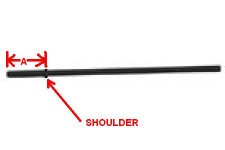Boogsawaste
Member
I believe 10-7 and later have the gas ring change(hopefully someone can confirm or correct me on this).
I've swapped a couple cylinders myself and they both worked good. Both were done for cosmetic reasons on k frames.
I would also pull your side plate if you're comfortable with that and measure the hand. If it's an oversized it could complicate things and if it binds with the new cylinder a stock size might possibly be needed. Of course the opposite could be true that the new cylinder could require an oversized hand and you have a stock one installed.
I've swapped a couple cylinders myself and they both worked good. Both were done for cosmetic reasons on k frames.
I would also pull your side plate if you're comfortable with that and measure the hand. If it's an oversized it could complicate things and if it binds with the new cylinder a stock size might possibly be needed. Of course the opposite could be true that the new cylinder could require an oversized hand and you have a stock one installed.
Last edited:

